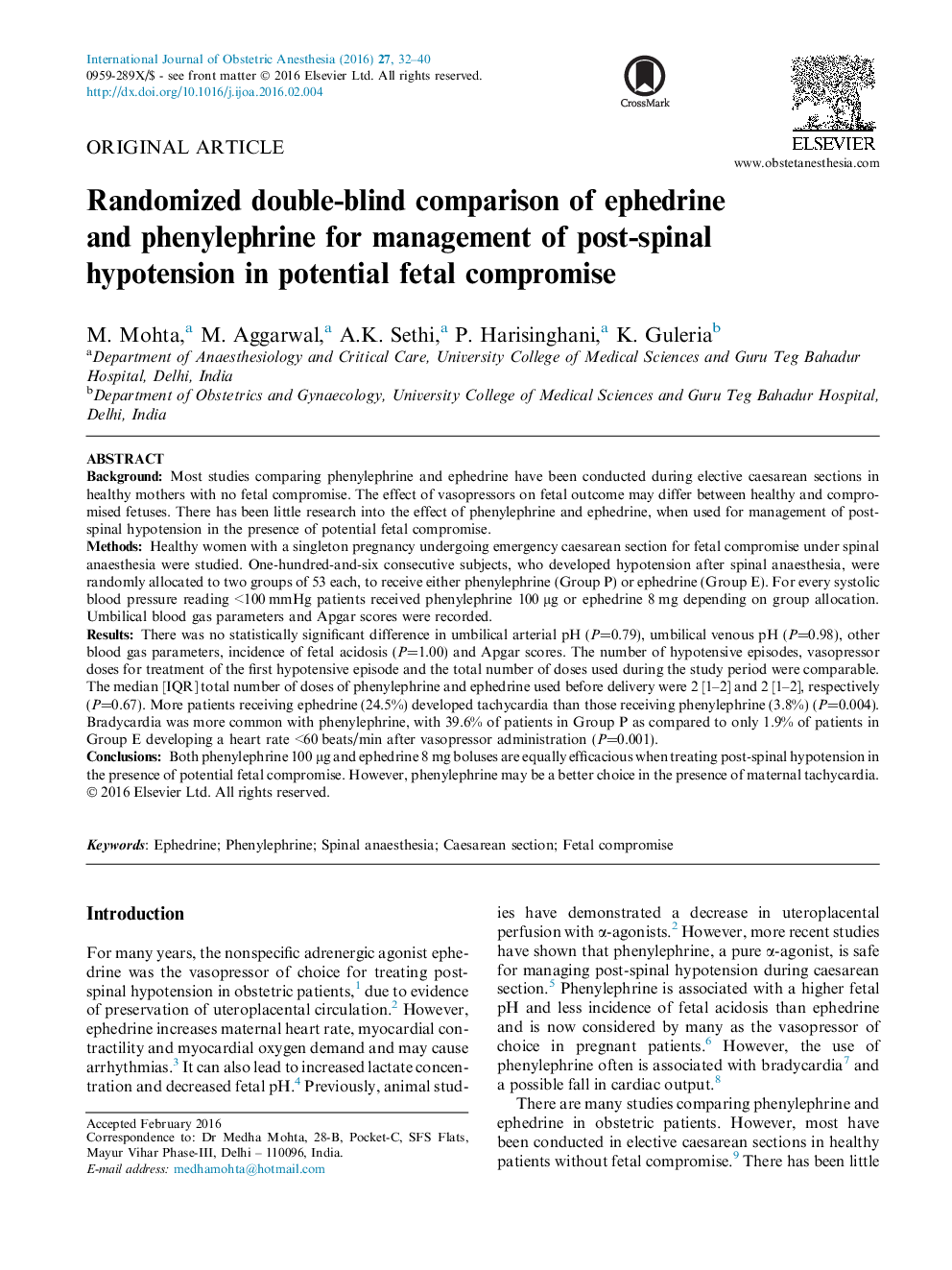| کد مقاله | کد نشریه | سال انتشار | مقاله انگلیسی | نسخه تمام متن |
|---|---|---|---|---|
| 2757407 | 1567508 | 2016 | 9 صفحه PDF | دانلود رایگان |
• Women undergoing caesarean section for potential fetal compromise were studied.
• Post-spinal hypotension was treated with phenylephrine 100 μg or ephedrine 8 mg.
• One-hundred-and-six patients were randomized to receive phenylephrine or ephedrine.
• Fetal acid–base status and Apgar scores were comparable.
• Both vasopressors were equally efficacious in treating post-spinal hypotension.
BackgroundMost studies comparing phenylephrine and ephedrine have been conducted during elective caesarean sections in healthy mothers with no fetal compromise. The effect of vasopressors on fetal outcome may differ between healthy and compromised fetuses. There has been little research into the effect of phenylephrine and ephedrine, when used for management of post-spinal hypotension in the presence of potential fetal compromise.MethodsHealthy women with a singleton pregnancy undergoing emergency caesarean section for fetal compromise under spinal anaesthesia were studied. One-hundred-and-six consecutive subjects, who developed hypotension after spinal anaesthesia, were randomly allocated to two groups of 53 each, to receive either phenylephrine (Group P) or ephedrine (Group E). For every systolic blood pressure reading <100 mmHg patients received phenylephrine 100 μg or ephedrine 8 mg depending on group allocation. Umbilical blood gas parameters and Apgar scores were recorded.ResultsThere was no statistically significant difference in umbilical arterial pH (P=0.79), umbilical venous pH (P=0.98), other blood gas parameters, incidence of fetal acidosis (P=1.00) and Apgar scores. The number of hypotensive episodes, vasopressor doses for treatment of the first hypotensive episode and the total number of doses used during the study period were comparable. The median [IQR] total number of doses of phenylephrine and ephedrine used before delivery were 2 [1–2] and 2 [1–2], respectively (P=0.67). More patients receiving ephedrine (24.5%) developed tachycardia than those receiving phenylephrine (3.8%) (P=0.004). Bradycardia was more common with phenylephrine, with 39.6% of patients in Group P as compared to only 1.9% of patients in Group E developing a heart rate <60 beats/min after vasopressor administration (P=0.001).ConclusionsBoth phenylephrine 100 μg and ephedrine 8 mg boluses are equally efficacious when treating post-spinal hypotension in the presence of potential fetal compromise. However, phenylephrine may be a better choice in the presence of maternal tachycardia.
Journal: International Journal of Obstetric Anesthesia - Volume 27, August 2016, Pages 32–40
